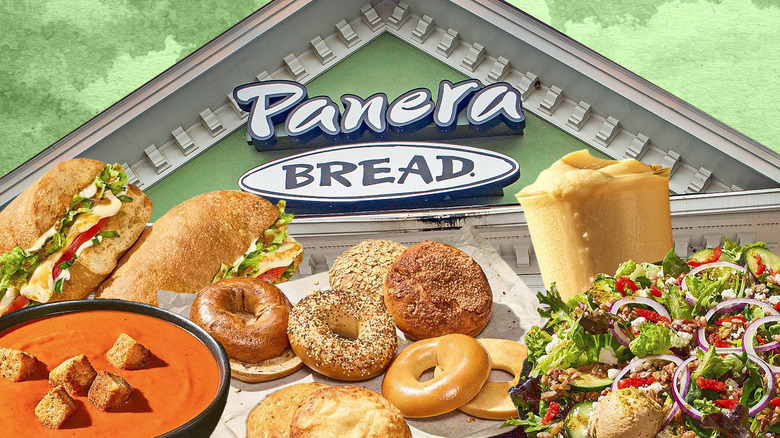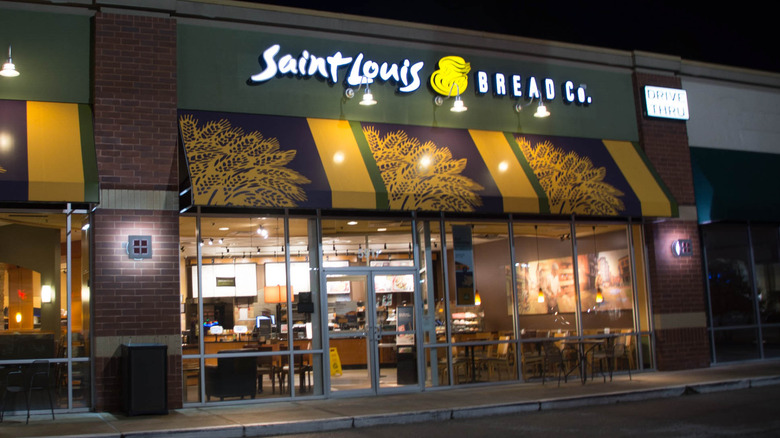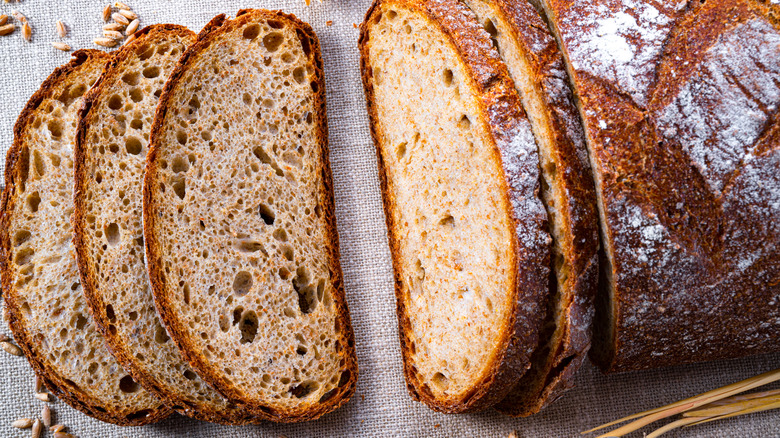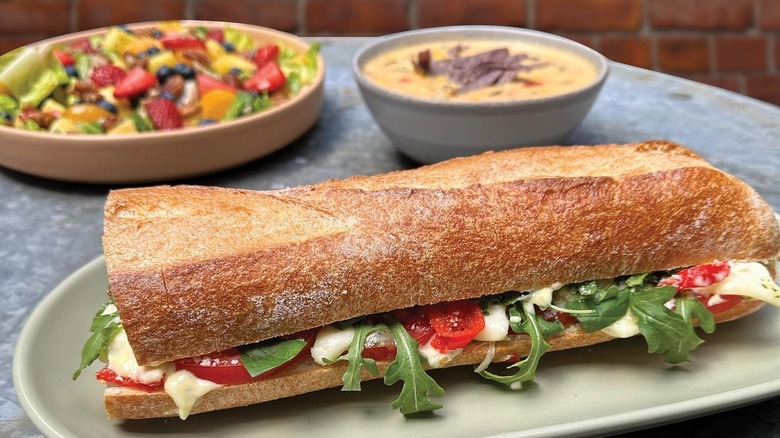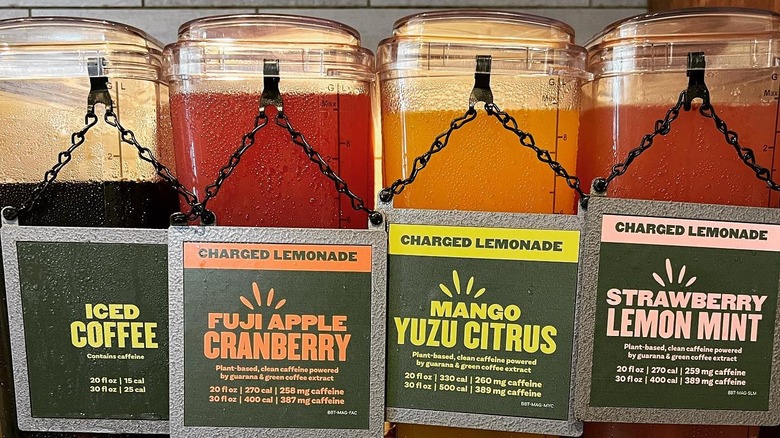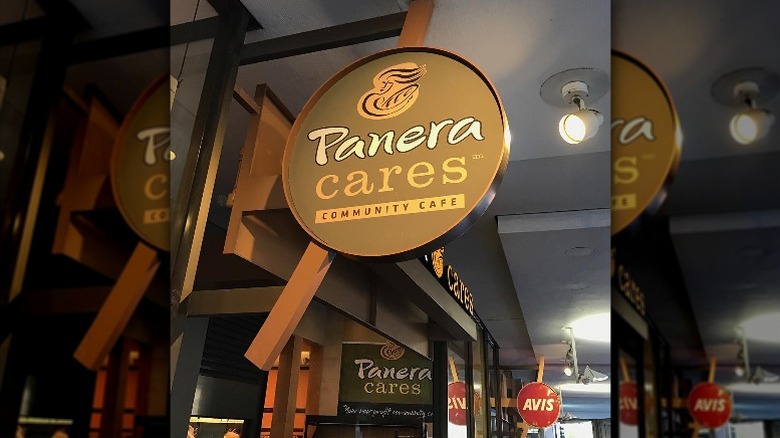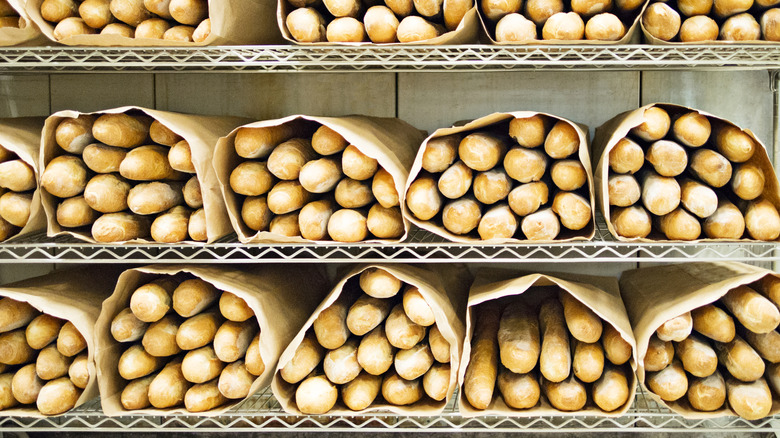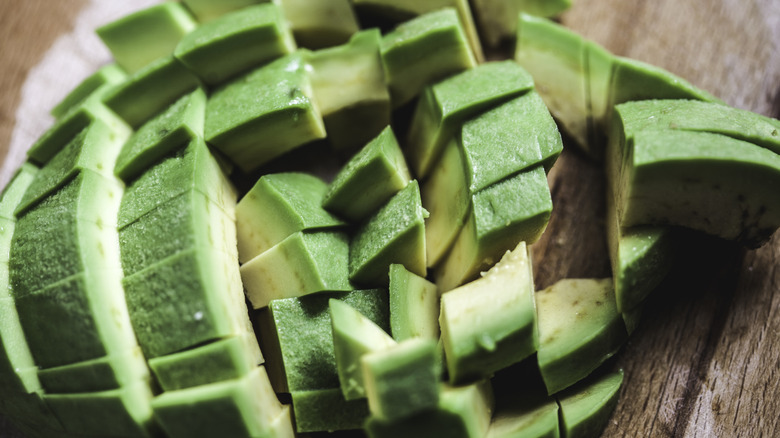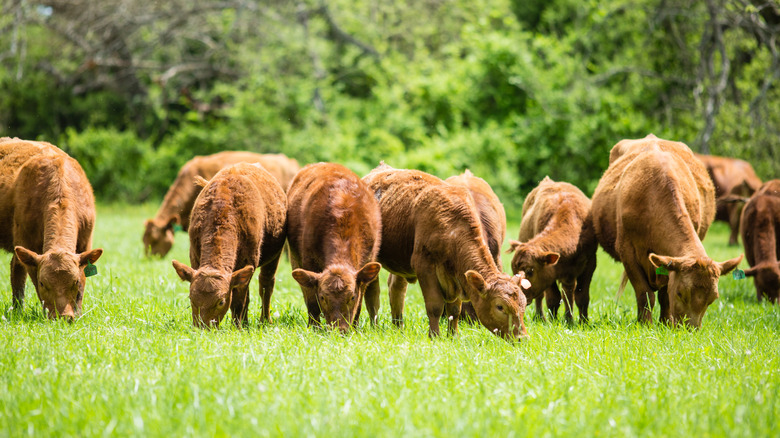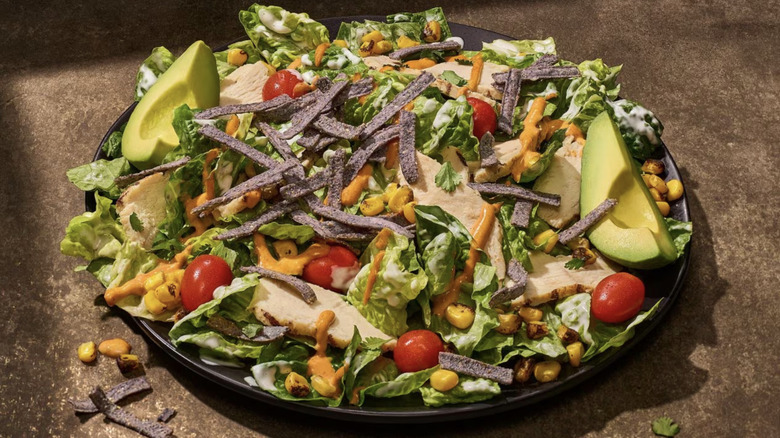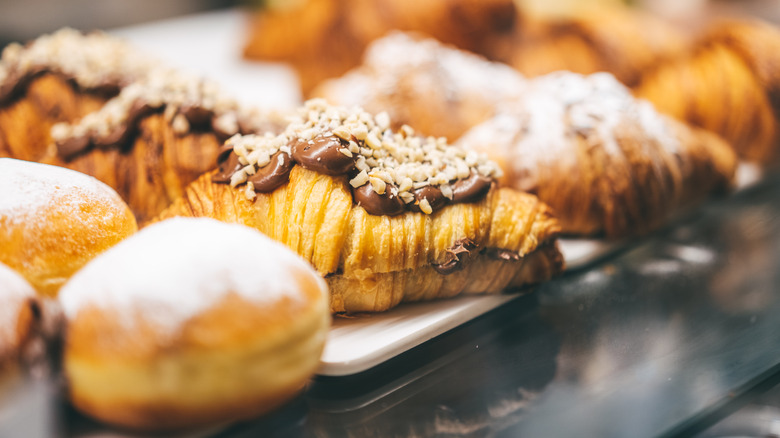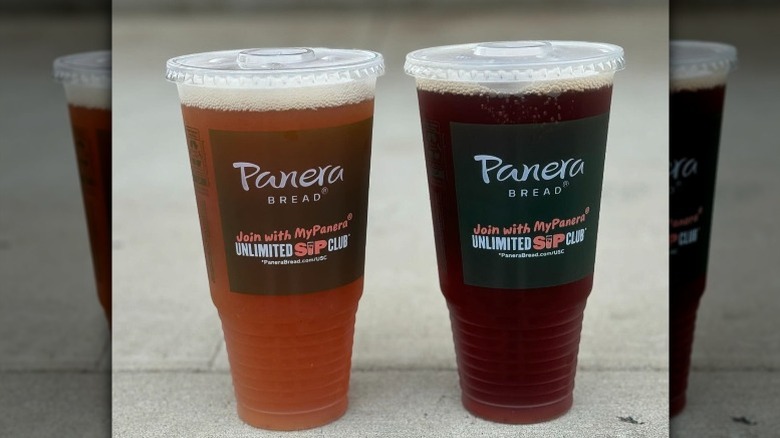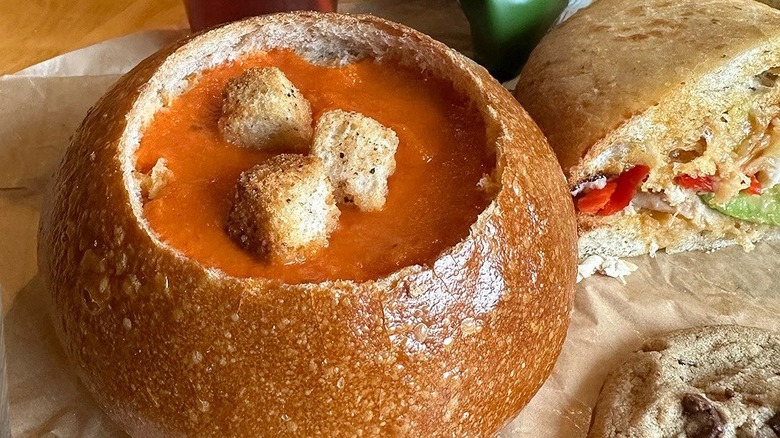Secrets You Didn't Know About Panera Bread
For many, Panera Bread is more than just a quick bite — it's a cozy haven with familiar flavors, comforting meals, and a laid-back atmosphere that keeps customers coming back again and again. Known for its signature bread baked fresh daily, Panera has built a loyal following, with favorites like its delicious sandwiches, rich, creamy soups, and iconic bread bowls leading the way. Over the years, Panera's unique blend of quality, comfort, and speed has helped it carve out a distinct space in the fast-casual dining world.
But there's more to Panera than meets the eye. From its roots as a small bakery to its rise as a household name, Panera's story is filled with surprising twists and memorable decisions, some of which might even leave you raising an eyebrow. While the brand has garnered attention for its socially responsible initiatives and focus on customer experience, not all aspects of its journey are as rosy as they seem. Ready to see your favorite bakery-café in a whole new light? Here are 12 interesting secrets about Panera that even the most devoted fans might not know.
Originally, Panera opened under a different name
Panera Bread wasn't always known by its current, familiar name. When it first opened in 1987, the company was called the St. Louis Bread Company, a modest bakery with only a few locations in St. Louis, Missouri. Focused on serving fresh, high-quality bread, the bakery quickly became a favorite among locals.
Things changed in 1993. After the popular bakery had grown into a small chain of 20 locations, the Au Bon Pain Company acquired it for $23 million. This pivotal move set the stage for Panera's national expansion. Fast-forward to 1998, and Au Bon Pain decided it was time for a rebrand, choosing the name Panera — a Latin-inspired word meaning "breadbasket" — to capture its broader vision.
Interestingly, the company's original name still survives in Missouri. Those locations continue to operate as St. Louis Bread Company, adding a touch of nostalgia for locals. Today, Panera has grown into a well-known chain across the U.S. and Canada, with over 2,000 locations. That being said, its roots in a small Midwestern bakery remain a charming part of its history, reminding customers of the brand's humble beginnings.
The sourdough recipe has remained the same since Panera opened
When Panera's founders, Ken and Linda Rosenthal, launched the St. Louis Bread Company in 1987, they did so with a unique sourdough starter sourced from San Francisco. For all of the non-bakers out there, a sourdough starter is a fermented mixture of flour and water that captures wild yeast and bacteria from the environment, allowing for natural fermentation. This process not only leavens the bread but also gives it a distinct tangy flavor, instantly setting it apart from other bakery items. Though the Rosenthals eventually sold the business, Panera still uses the couple's original claim to fame, their sourdough recipe, creating a sense of continuity and tradition within the ever-evolving menu.
So, each time you bite into a slice of Panera's sourdough, you're tasting a little piece of history that's been maintained since day one. Beyond just being a staple for sandwiches and soups, sourdough represents a revival of the artisanal that many consumers value. It's a little detail that helps make Panera's offerings resonate with customers who may appreciate not only the delicious bread but also the stories behind their meals.
It was the first national chain to make calorie information available
Calorie counts are commonly displayed on fast-food and chain restaurant menus these days, but that wasn't always the case. In fact, Panera was a trailblazer in this regard, becoming the first national restaurant chain to provide calorie information to customers back in 2010. This move was part of Panera's response to an increasingly health-conscious public that was demanding more transparency about the food they consumed.
By providing calorie counts, Panera not only acknowledged the growing trend toward health and wellness but also reinforced its brand identity as a leader in the fast-casual dining sector. It was a way to make customers feel more empowered in their food selections based on dietary needs and preferences.
This pioneering effort helped to set the stage for broader changes in the industry. In 2018, the requirement to display calorie information became law as part of the Affordable Care Act, mandating that chain restaurants share this information on their menus. Now, consumers often expect not only calorie counts but also other nutritional information, such as fat content and detailed lists of ingredients, to guide their dining choices. As a result, the landscape of the restaurant industry has evolved, with transparency now seen as an essential factor for consumer trust and loyalty.
Panera's Charged Lemonade may have killed two people
For Panera fans, it's probably not ideal to hear the news that the chain's Charged Lemonade, known for its ultra-caffeinated kick, may have contributed to the tragic deaths of two individuals. This highly potent beverage, introduced in 2022, quickly gained popularity for its energizing boost. However, it's now facing serious scrutiny after two wrongful death lawsuits were filed, linking the drink to the loss of Sarah Katz, a 21-year-old Ivy League student, and Dennis Brown, a 46-year-old man from Florida.
Panera's Charged Lemonade, which came in a 30-ounce serving, contained a staggering 390 milligrams of caffeine — almost twice the amount found in a medium-sized brewed coffee (approximately 200 milligrams) and equivalent to consuming over 11 cans of Coca-Cola. While marketed as a clean, plant-based drink, many customers were unaware of just how potent it was in terms of caffeine. The drink's popularity skyrocketed, with social media users sharing their experiences, both positive and alarming, which only fueled its visibility.
Following these alarming incidents, Panera has decided to discontinue its Charged Lemonade. The lawsuits resulted in settlements, highlighting the legal ramifications of inadequate product warnings. In general, the situation serves as a stark reminder of the critical need for transparency in product information, as a marketing oversight like this can lead to dire consequences for consumer safety.
You didn't always have to pay for your order
Imagine walking into Panera and being able to pay the amount you decide on rather than a pre-listed price on a menu. Well, that's exactly what the Panera Cares locations offered. Between 2010 and 2019, Panera opened several of these community cafes across the U.S., operating on a pay-what-you-can model designed to help low-income individuals access nutritious meals. This innovative concept really broke down a barrier to healthy food by allowing customers to choose their prices, encouraging generosity while supporting community engagement.
The initiative was part of Panera's broader commitment to addressing food insecurity and promoting social responsibility. However, despite its noble intentions, the model faced financial sustainability challenges, leading to the gradual closure of all Panera Cares locations. The last remaining one in Boston sadly shut its doors in 2019.
While the Panera Cares project is now a closed chapter, it remains a significant and interesting part of the company's history. Showcasing Panera's efforts to do more than just make a profit, the legacy of these cafes demonstrates that with a little effort, accessible nutrition and corporate responsibility are possible in the food industry.
Leftover bread is donated daily
Panera has shown a meaningful commitment to social welfare and community support in a variety of ways. One of them is through its Day-End Dough-Nation program, where the chain donates unsold bread and baked goods to local nonprofits, food banks, and shelters at the end of each day. This initiative helps those in need by providing fresh, quality food to individuals and families facing food insecurity.
While not every single Panera location participates, the Day-End Dough-Nation program has helped distribute food to thousands of organizations across the country. Actions like these serve as a reminder of the broader impact that companies can have through simple, consistent acts of kindness — without even dipping into profit.
Aside from the positive impact on social welfare, the program also reinforces Panera's environmental responsibility, as food waste is a notable contributor to greenhouse gas emissions and climate change. So, the next time you enjoy a pastry or sandwich from Panera, you can feel good knowing that the chain is doing more than serving up tasty food. It's making a difference behind the scenes, too.
Menu items can be made vegetarian for free
While Panera is well-known for its large and diverse menu, many patrons may not realize the extent of its flexibility when it comes to dietary preferences. In addition to marked vegetarian and vegan options, Panera allows patrons to customize its meat-based dishes at no additional cost. This means that if you find yourself craving a sandwich or salad that typically features meat, Panera allows you to substitute it for avocado without an upcharge.
For instance, if you're a big fan of the Mediterranean Chicken Greens with Grains salad but want to go vegetarian for the day, you can swap out the chicken for fresh avocado. Customization like this encourages customers to experiment with their orders, while also making it easier for vegetarians to explore more of the menu rather than sticking to a limited selection.
This approach aligns with a growing trend in the food industry towards more plant-based options. As consumer awareness of health and environmental issues increases, restaurants like Panera are stepping up to meet these demands. The flexibility to modify menu items not only caters to vegetarians but also appeals to health-conscious diners looking to reduce meat consumption without feeling limited. Whether you're a dedicated vegetarian or simply looking to cut back on meat, Panera's willingness to adapt to your preferences is a welcome aspect of its dining experience.
Despite clean food claims, Panera faces a few ingredient caveats
Panera boasts a commitment to "clean" food with its well-known "No No List" that prohibits the use of artificial preservatives, sweeteners, colors, and flavors. It also claims to source from animals that have been responsibly raised, meaning the animals are treated humanely and never given antibiotics. However, despite these supposedly high standards, recent developments have raised questions about the integrity of its ingredient sourcing.
For instance, glyphosate, a controversial herbicide linked to health concerns, has been detected in some Panera menu items. This revelation has sparked criticism and concern among health-conscious consumers who have come to expect a truly clean dining experience, as promised. On top of that, while Panera once upheld stringent animal welfare standards, reports indicate that the company has relaxed its commitments, moving away from guarantees of antibiotic-free, hormone-free, and grass-fed sourcing for its meat products.
The disparity between Panera's marketing and the reality of its changed ingredient sources is a clear reminder that it's best not to assume a brand's claims are always reflective of its practices. These types of marketing messages should instead be approached with a critical eye because policies can quickly change and end up falling short of any and all previous promises.
The secret menu isn't as healthy as it sounds
Panera's secret menu, which it calls the "Power Menu" is marketed as a health-conscious choice. However, a closer inspection of the items on that menu reveals something else. For instance, the Power Mediterranean Chicken Salad can sound like a fairly healthy choice to an unsuspecting customer. However, it contains a surprising 22 grams of fat, with 4 grams of saturated fat and 215 milligrams of cholesterol. For perspective, this is 28% of the FDA's recommendation for daily fat consumption, 22% of its daily recommendation for saturated fat consumption, and an alarming 77% of its daily recommendation for cholesterol consumption. This nutrition profile clearly contradicts the healthier image the salad projects in its name, which can easily mislead customers who are aiming to make lighter meal choices. Several items on Panera's secret Power Menu follow suit, so before indulging in one of these supposedly healthier options, be sure to review the nutrition facts.
This phenomenon is not unique to Panera either. Many restaurants use health-focused language in their marketing to drive sales, even if it doesn't reflect the true nutritional value of their menu items. What's worse is that, according to research, consumers often underestimate the calorie content of meals that are made to seem healthy, which can end up tricking them into ordering a dish that is far off from the nutrition they were hoping for.
A free treat is available for your birthday
Panera's loyalty program, MyPanera, adds a special touch to your birthday celebration by offering members a free treat. For your birthday, you can choose between a delicious pastry, a bagel, or even $2 off your order. It's a small gesture that shows Panera's appreciation for its regular customers and can also help make your birthday feel just a bit more special. This birthday perk not only adds a personal touch to the celebration but also serves as an effective incentive for customers to join the loyalty program in the first place.
Joining MyPanera is completely free and comes with a variety of benefits beyond the birthday treat. Members gain access to exclusive discounts and early notifications about new menu items, improving the overall experience for frequent diners. In the end, the program not only encourages customer loyalty but also fosters a sense of community among Panera enthusiasts.
Joining the beverage club will get you unlimited drinks
Many customers are woefully unaware of Panera's Sip Club, which offers a unique way to enjoy unlimited beverages while saving money. For a monthly subscription fee of $14.99, members of Panera's Sip Club can enjoy a wide variety of drinks, which include coffee, tea, and fountain beverages. With the membership, you can order a completely new beverage every two hours, making it a great deal for anyone who is a regular to the beloved chain. And if you choose to dine in, free refills further sweeten the deal.
With over 20 drink options available to members, the Sip Club caters to a variety of beverage moods. Whether you're craving a rich iced coffee, soothing herbal tea, or one of many flavors of soda, Panera has you covered. All in all, the Sip Club really is a stellar deal if you dine at Panera enough, especially considering that a single cup of coffee can cost around $3 or more.
The soups come in a package
People often rave about the soups at Panera, so much so that there are even copycat recipes for the different soup flavors all over the internet. Needless to say, they are a beloved staple of the menu, often paired with sandwiches or salads to make a meal out of them. However, while many patrons may think these hearty soups are made fresh in-house — because of how delicious they are — the reality is a bit different. In truth, Panera's soups arrive in a package, and the staff simply heats them up before serving. This method ensures a consistently delicious flavor across all locations, but it might catch some customers off guard who thought they were getting a from-scratch meal.
Panera emphasizes the use of high-quality ingredients in its soups, even if they aren't made to order. They contain absolutely no artificial preservatives or additives, so they still hold some appeal for health-conscious diners.
Pre-packaged as they are, Panera's soups remain a comfort food favorite for many. Classics like the creamy broccoli cheddar – one of the best non-greasy fast food options out there — and savory French onion are especially popular, and you can even order them, or any soup, in Panera's signature bread bowl. These warm, crusty bowls significantly upgrade the presentation of the soup while also providing a scrumptious way to savor every drop of soup as you finish it off by eating the bread.
